The Role of Hydropower in Achieving Energy Independence
In today's world, the quest for energy independence has never been more critical. As nations grapple with the challenges of climate change, fluctuating fossil fuel prices, and the need for sustainable energy sources, hydropower emerges as a beacon of hope. This renewable energy source not only harnesses the natural flow of water to generate electricity but also contributes significantly to reducing greenhouse gas emissions. By tapping into the power of rivers and streams, countries can lessen their reliance on imported fossil fuels, paving the way for a more secure and resilient energy future.
Hydropower is not just about generating electricity; it's about creating a sustainable energy ecosystem that supports economic growth and environmental stewardship. Imagine a world where energy is abundant, clean, and locally sourced—this is the promise of hydropower. As we delve deeper into the significance of hydropower, we will explore its benefits, the challenges it faces, and its potential to revolutionize the global energy landscape.
To understand the role of hydropower in achieving energy independence, it's essential to recognize its historical context and its current position within the energy mix. For centuries, humans have harnessed water for various purposes, from milling grain to generating electricity. Today, hydropower accounts for approximately 16% of the world's electricity, making it one of the largest sources of renewable energy. With advancements in technology and a growing emphasis on sustainability, hydropower is poised to play an even more significant role in the future.
As we navigate the complexities of energy independence, it's crucial to acknowledge the multifaceted nature of hydropower. It offers a plethora of benefits, including the ability to provide reliable energy, contribute to economic stability, and support environmental goals. However, with great power comes great responsibility. The development of hydropower projects must be approached with caution, considering the potential impacts on local ecosystems and communities. Balancing the need for energy production with environmental preservation is key to ensuring that hydropower can fulfill its promise as a sustainable energy source.
In conclusion, the role of hydropower in achieving energy independence is not just a matter of generating electricity; it is about creating a sustainable future where energy is secure, affordable, and environmentally friendly. As we continue to explore the benefits and challenges of hydropower, it becomes increasingly clear that this renewable resource is a vital component of a comprehensive strategy for energy independence.
- What is hydropower? Hydropower is a renewable energy source that generates electricity by harnessing the energy of flowing water.
- How does hydropower contribute to energy independence? By providing a locally sourced and renewable energy option, hydropower reduces reliance on imported fossil fuels.
- What are the environmental impacts of hydropower? While generally cleaner than fossil fuels, hydropower can affect ecosystems, including fish migration and water quality.
- What innovations are improving hydropower efficiency? Recent advancements include improved turbine designs and fish-friendly technologies that enhance sustainability.
- What challenges does hydropower face? Regulatory hurdles, public opposition, and funding issues can hinder the development of new hydropower projects.
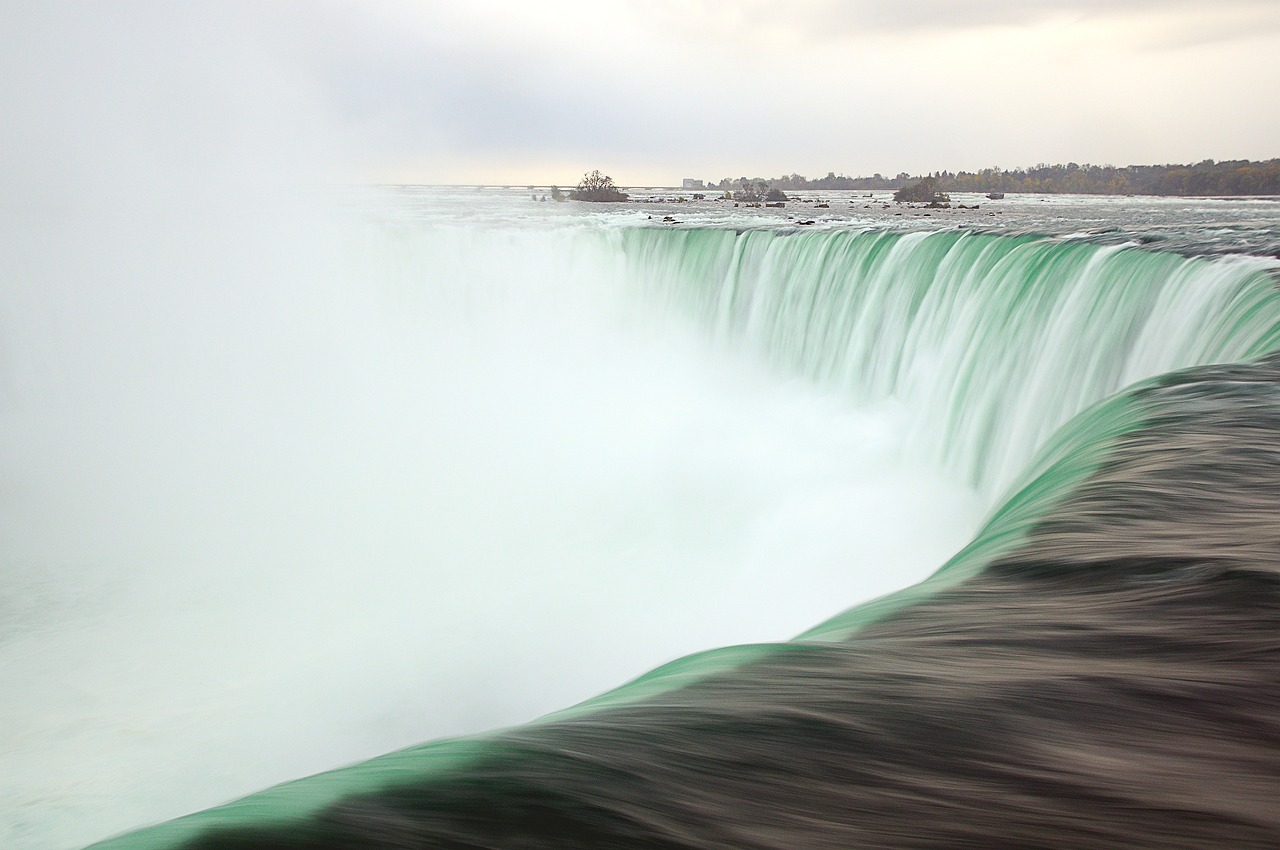
Understanding Hydropower
Hydropower, often referred to as water power, is a remarkable method of generating electricity that harnesses the natural flow of water. Imagine standing by a roaring river, feeling the cool mist on your face as the water rushes by. This powerful movement is what we tap into to create energy. The basic principle is straightforward: when water flows, it turns turbines, which then convert that kinetic energy into electrical energy. This process has been utilized for centuries, dating back to ancient civilizations that used water wheels for milling grain.
Historically, hydropower has played a significant role in our energy landscape. The first large-scale hydropower plant was built in 1882 in Appleton, Wisconsin, and since then, the technology has evolved tremendously. Today, hydropower accounts for about 16% of the world's electricity, making it one of the largest sources of renewable energy globally. It’s fascinating to think that, while we are advancing into an era of solar and wind energy, hydropower continues to be a cornerstone of our energy mix.
Currently, hydropower is not just about large dams and reservoirs; it also includes smaller-scale projects, such as run-of-the-river systems and pumped storage facilities. These innovations allow us to utilize water resources more efficiently and minimize environmental impacts. For instance, run-of-the-river systems generate electricity without the need for large reservoirs, thus preserving more natural habitats. This adaptability is crucial as we strive for energy independence and sustainability.
Furthermore, hydropower plays a vital role in balancing the energy grid. As a reliable source of energy, it can be ramped up or down quickly to meet demand fluctuations, making it an essential partner for intermittent renewable sources like solar and wind. This flexibility is akin to having a dependable friend who can step in whenever you need support, ensuring that the lights stay on and the economy keeps moving.
In summary, understanding hydropower involves recognizing its historical significance, current applications, and its pivotal role in future energy strategies. As we continue to explore and innovate in this field, hydropower stands as a testament to our ability to harness nature's forces for sustainable energy production.
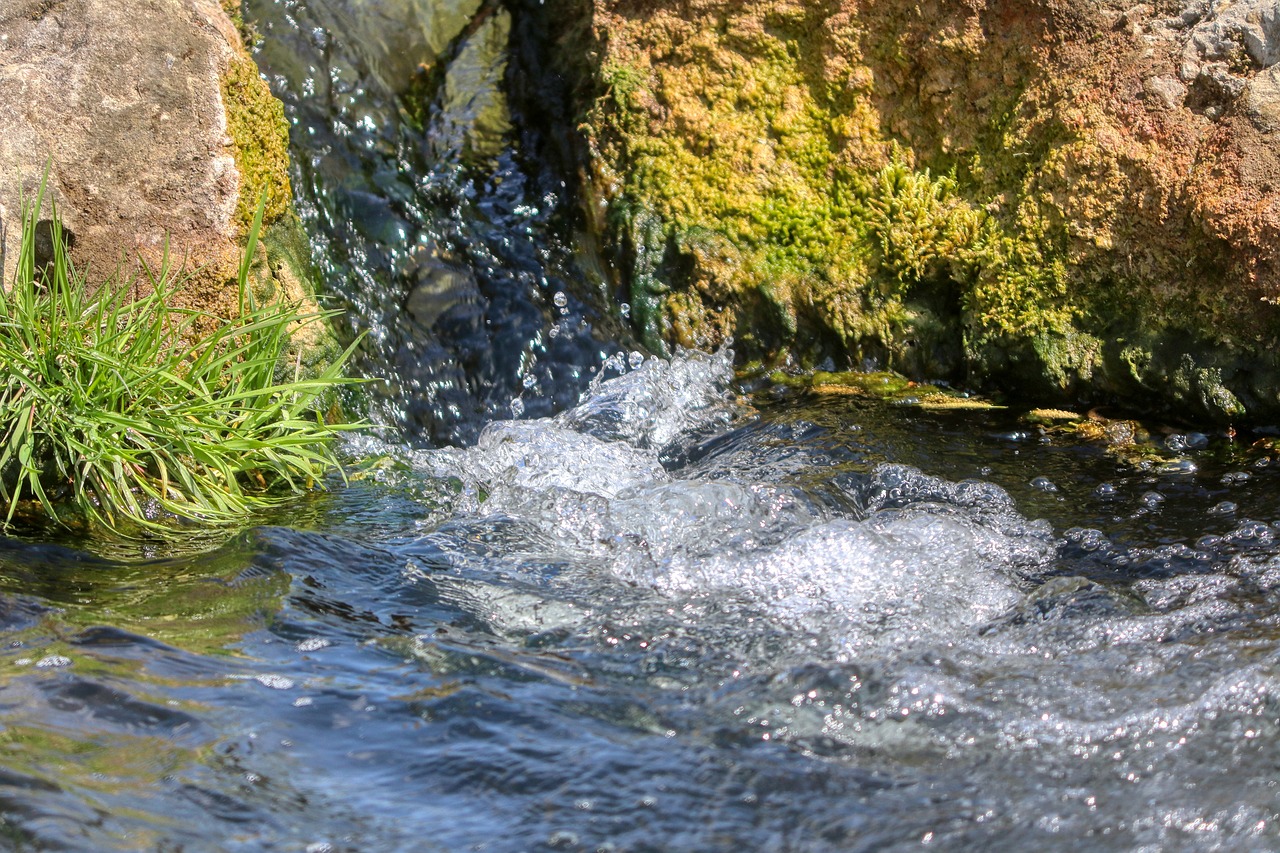
Benefits of Hydropower
Hydropower stands out as a beacon of hope in the quest for sustainable energy solutions. By harnessing the natural flow of water, it provides a reliable and renewable source of electricity. One of the most compelling benefits of hydropower is its ability to produce energy without emitting greenhouse gases. Unlike fossil fuels, which release carbon dioxide and other harmful pollutants into the atmosphere, hydropower generates electricity through a process that primarily involves the movement of water. This makes it an essential player in the fight against climate change, allowing us to reduce our carbon footprint while meeting our energy needs.
Moreover, hydropower is incredibly reliable. Water is a constant resource in many regions, and unlike solar or wind energy, which can be intermittent, hydropower can provide a steady and predictable supply of electricity. This reliability is crucial for maintaining the stability of the energy grid, especially during peak demand periods. In fact, hydropower plants can quickly adjust their output to match the fluctuations in energy demand, making them an essential part of a balanced energy mix.
Another significant advantage of hydropower is its capacity for energy storage. Many hydropower facilities operate as pumped storage systems, where water is pumped to a higher elevation during periods of low demand and released to generate electricity during peak demand. This ability to store energy not only enhances the flexibility of the energy system but also helps to balance the supply and demand, ensuring that energy is available when it's needed most.
In addition to these environmental and operational benefits, hydropower also contributes to local economies. The construction and maintenance of hydropower facilities create jobs and stimulate economic growth in the surrounding areas. Furthermore, the electricity generated can lead to lower energy costs for consumers, making it an economically attractive option for many communities. When we consider the long-term benefits, the initial investment in hydropower infrastructure often pays off significantly, both in terms of energy savings and environmental impact.
However, it’s essential to recognize that the benefits of hydropower extend beyond just energy production and economic growth. They also include:
- Water Supply Management: Hydropower reservoirs can serve as important water supply sources for irrigation and drinking water, especially in arid regions.
- Flood Control: By regulating river flow, hydropower projects can help mitigate the risk of flooding, protecting communities and ecosystems downstream.
- Recreation: Many hydropower reservoirs create opportunities for recreational activities such as fishing, boating, and hiking, enhancing the quality of life for local residents.
In summary, the benefits of hydropower are multifaceted, encompassing environmental, economic, and social dimensions. As we strive for energy independence, hydropower offers a sustainable solution that can help us achieve our goals while preserving the planet for future generations. By investing in and expanding hydropower infrastructure, we can harness the power of water to create a cleaner, more resilient energy future.
1. What is hydropower?
Hydropower is a renewable energy source that generates electricity by harnessing the energy of flowing or falling water.
2. How does hydropower contribute to energy independence?
Hydropower provides a reliable and consistent source of energy, reducing reliance on imported fossil fuels and enhancing local energy security.
3. Are there environmental concerns associated with hydropower?
While hydropower is cleaner than fossil fuels, it can impact aquatic ecosystems and water quality. However, these impacts can often be mitigated through careful planning and technology.
4. What are the economic benefits of hydropower?
Hydropower projects create jobs, stimulate local economies, and can lead to lower electricity costs for consumers.
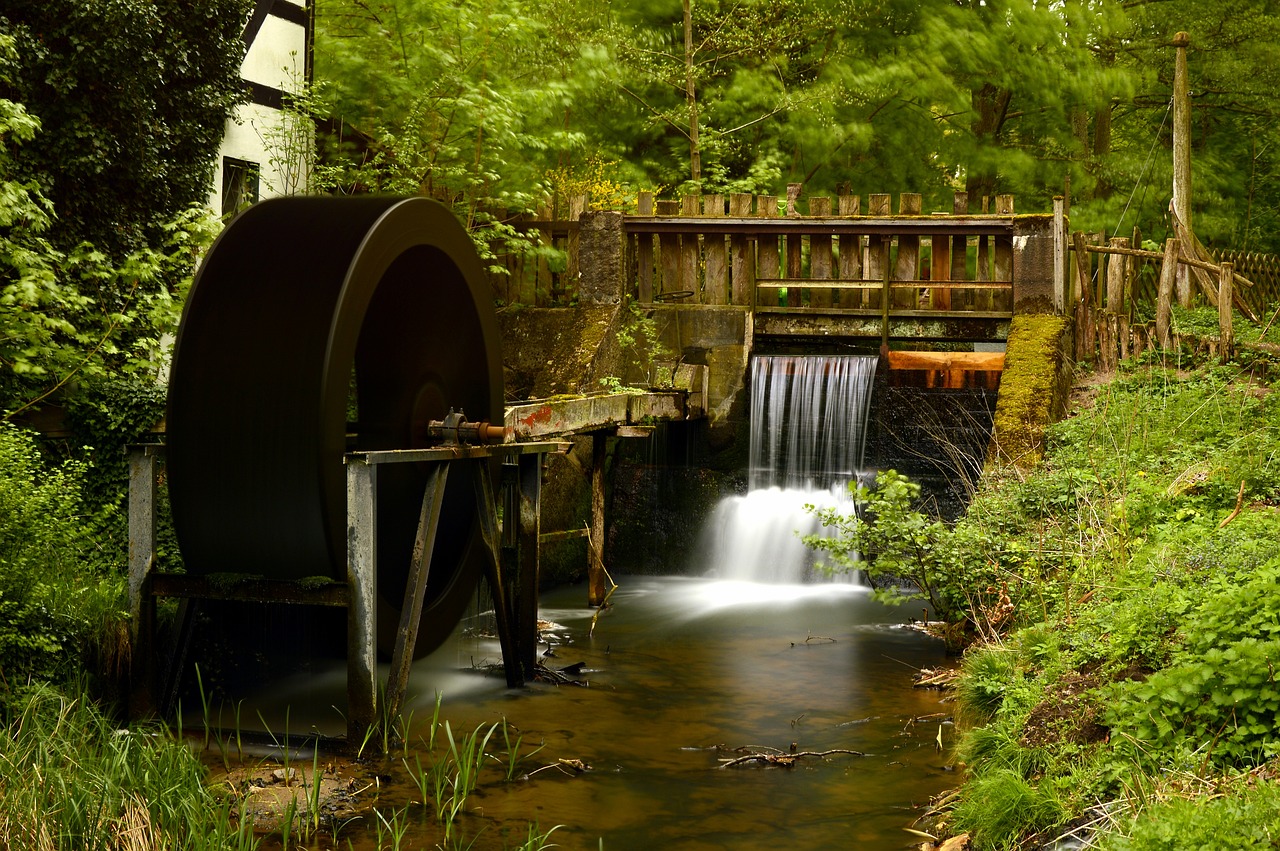
Environmental Impact
Hydropower is often hailed as a cleaner alternative to fossil fuels, but it’s essential to recognize that it comes with its own set of environmental impacts. When we think about harnessing the power of rivers and lakes, we must also consider the ecosystems that thrive in these environments. The construction of dams and hydropower plants can significantly alter the natural landscape, leading to a range of ecological consequences that deserve our attention.
One of the most pressing issues is the disruption of aquatic ecosystems. Dams can obstruct the natural migration patterns of fish and other aquatic species, which rely on free-flowing waters to spawn and thrive. For instance, salmon, which are known for their incredible upstream migrations, often find themselves blocked by these man-made structures. This disruption can lead to a decline in fish populations, which in turn affects the entire food web, including species that depend on fish for sustenance.
Furthermore, the alteration of water flow and temperature can have profound effects on water quality. When water is held back by a dam, it can lead to stagnation, which may result in lower oxygen levels and increased water temperatures. These changes can create an environment that is less hospitable for aquatic life, promoting the growth of harmful algal blooms that can produce toxins detrimental to both wildlife and human health. The following table summarizes some of the key environmental impacts associated with hydropower:
| Environmental Impact | Description |
|---|---|
| Disruption of Aquatic Life | Dams block migration routes for fish, affecting spawning and population dynamics. |
| Water Quality Alterations | Changes in flow and temperature can lead to low oxygen levels and harmful algal blooms. |
| Habitat Loss | Flooding of land for reservoirs can destroy terrestrial habitats and biodiversity. |
Additionally, the flooding of large areas of land to create reservoirs can lead to the loss of terrestrial habitats. Forests, wetlands, and other ecosystems can be submerged, resulting in the displacement of wildlife and a decrease in biodiversity. This loss is not just an environmental concern; it also impacts local communities that rely on these natural resources for their livelihoods.
While hydropower is a renewable energy source, it’s crucial to approach its development with a mindset focused on sustainability and ecological balance. Mitigation strategies, such as fish ladders and careful site selection, can help alleviate some of these environmental impacts. However, it requires a collaborative effort among policymakers, environmentalists, and the public to ensure that hydropower can contribute to our energy needs without compromising the health of our ecosystems.
- What are the main environmental impacts of hydropower? Hydropower can disrupt aquatic ecosystems, alter water quality, and lead to habitat loss due to reservoir flooding.
- How do dams affect fish migration? Dams can block migration routes, making it difficult for fish to reach their spawning grounds, which can decrease fish populations.
- Are there ways to mitigate the environmental impacts of hydropower? Yes, strategies such as fish ladders, careful site selection, and environmental monitoring can help mitigate these impacts.
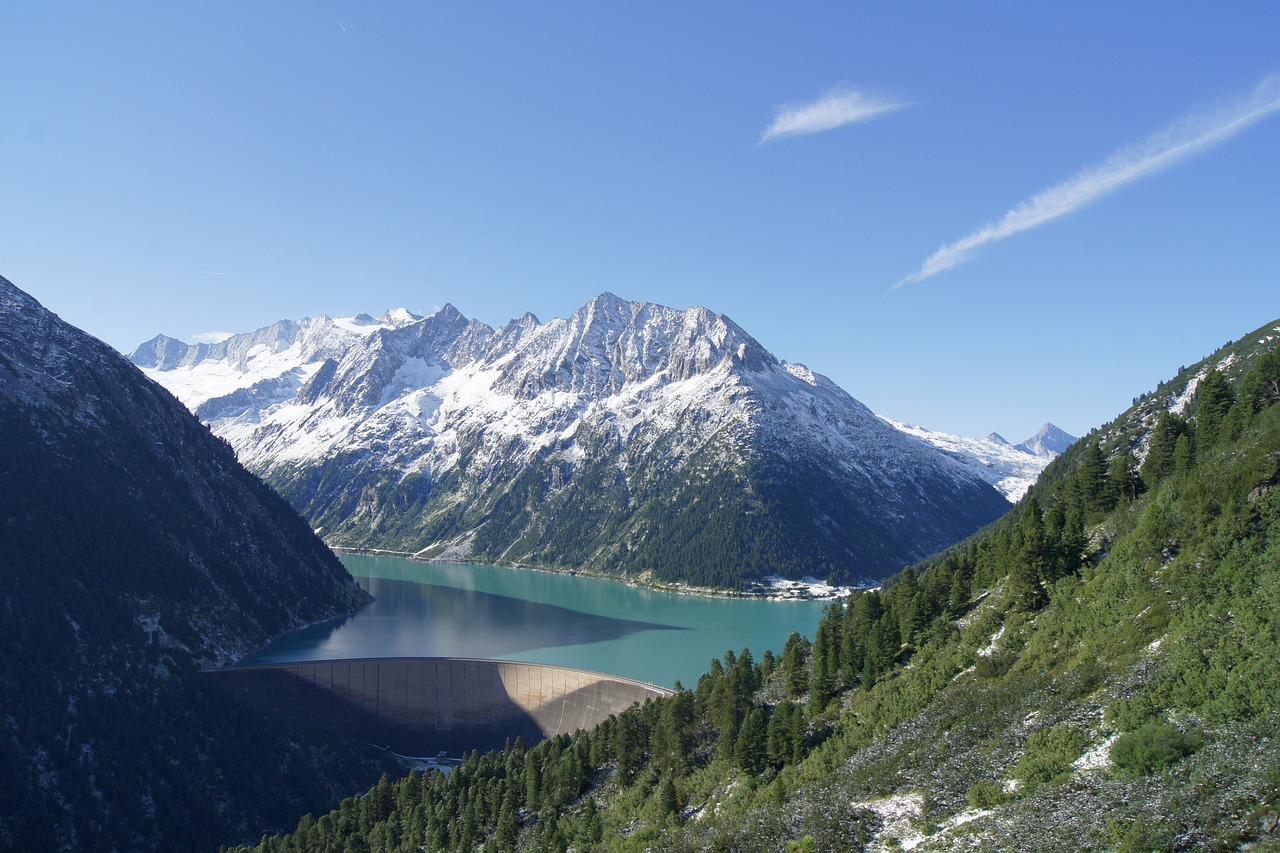
Impact on Aquatic Life
The construction and operation of hydropower plants can significantly alter aquatic ecosystems, leading to various challenges for fish and other marine organisms. One of the primary concerns is the disruption of natural fish migration patterns. Many fish species, such as salmon, rely on migratory routes to reproduce and thrive. When dams are built, these routes can be blocked, creating a barrier that prevents fish from reaching their spawning grounds. Imagine a highway suddenly being closed off—vehicles can't reach their destination, and similarly, fish find themselves stranded, unable to fulfill their biological imperatives.
Moreover, the presence of dams can lead to changes in water temperature and flow, which can further impact aquatic life. Fish are highly sensitive to their environment, and even slight variations in temperature can affect their metabolism, growth, and reproduction. For example, warmer water can lead to decreased oxygen levels, making it harder for fish to survive. This is particularly concerning for cold-water species that thrive in specific temperature ranges. When water flows are regulated, it can also lead to fluctuations that are unnatural for the ecosystem, creating an unstable habitat for aquatic organisms.
Additionally, the alteration of sediment transport due to damming can have profound effects on riverbeds and the organisms that inhabit them. Sediments are essential for maintaining the health of aquatic habitats; they provide nutrients and create the necessary conditions for various life forms. Without the natural flow of sediment, certain areas may become barren, leading to a decline in biodiversity. This can create a ripple effect, impacting not just fish but also birds and mammals that depend on these aquatic ecosystems for food and habitat.
To mitigate these impacts, many hydropower projects now incorporate fish ladders and bypass systems designed to help fish navigate around dams. These innovations are crucial in preserving aquatic life and maintaining biodiversity. However, the effectiveness of these solutions can vary, and ongoing research is essential to ensure that they meet the needs of different species. It's a delicate balancing act—how do we harness the power of water for energy while still protecting the intricate web of life that exists within it?
In summary, while hydropower is often touted as a cleaner energy alternative, it is essential to consider its impact on aquatic life. The challenges posed by dam construction and operation require thoughtful solutions that prioritize both energy production and ecological health. As we look to the future of energy independence, we must ensure that the methods we employ do not come at the expense of our planet's biodiversity.
- How do dams affect fish migration? Dams can block migratory routes, preventing fish from reaching their spawning grounds.
- What are fish ladders? Fish ladders are structures that help fish navigate around dams, allowing them to continue their migration.
- Can hydropower be environmentally friendly? While hydropower is cleaner than fossil fuels, it still poses challenges to aquatic ecosystems that need to be managed carefully.
- What species are most affected by hydropower? Species like salmon, which require specific migratory routes for spawning, are particularly vulnerable to the impacts of dams.
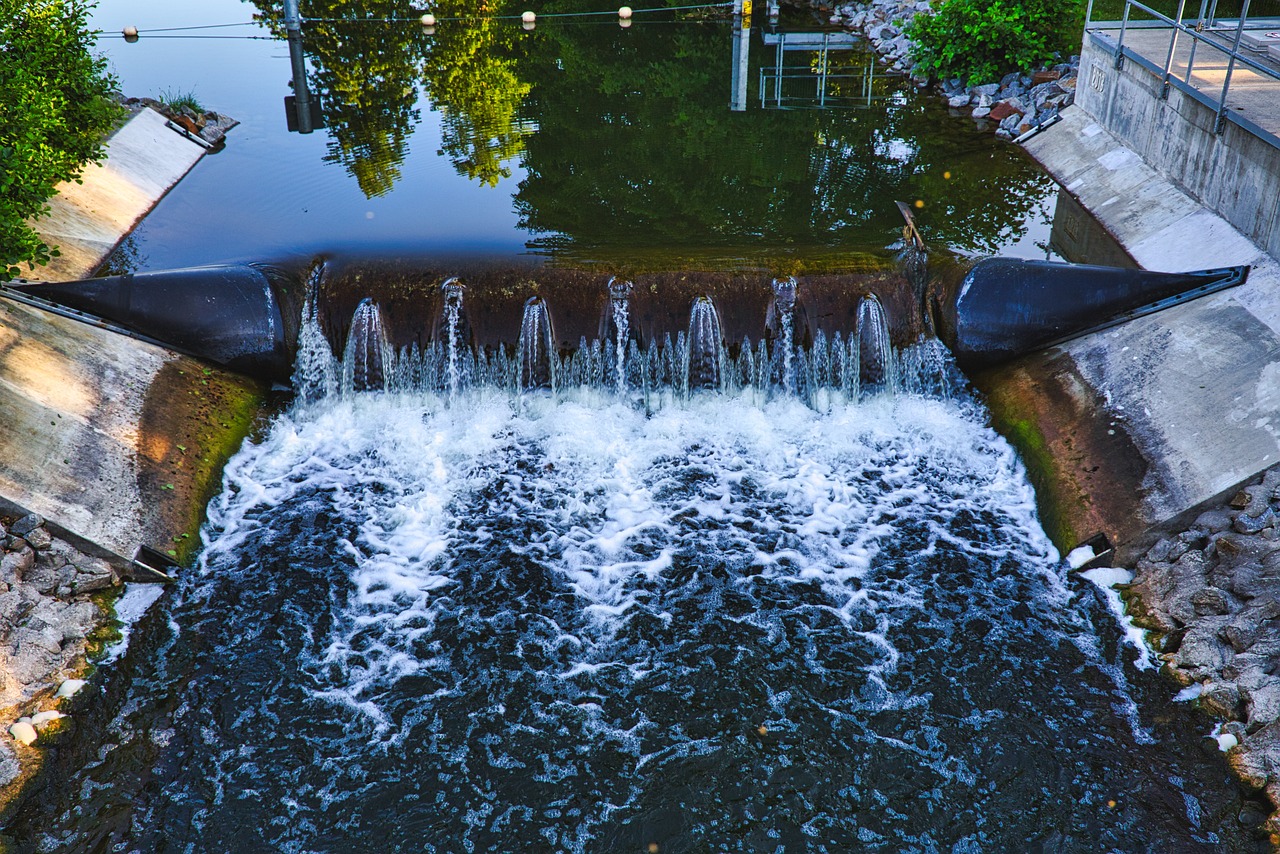
Water Quality Concerns
When we think about hydropower, the image that often comes to mind is one of clean, renewable energy flowing effortlessly from rivers and streams. However, beneath this surface, there are significant that need to be addressed. The construction and operation of hydropower plants can lead to alterations in water flow and temperature, which can have profound effects on the chemical composition of water bodies. These changes can disrupt the delicate balance of aquatic ecosystems, leading to unforeseen consequences.
One of the primary issues is the temperature stratification that can occur in reservoirs. When water is stored behind a dam, it can become warmer at the surface while cooler water remains at the bottom. This stratification can affect the oxygen levels in the water, which is crucial for the survival of various aquatic species. Warmer water holds less oxygen, which can lead to hypoxic conditions—a state where oxygen levels are too low to support life. Fish and other aquatic organisms may struggle to survive, leading to a decline in biodiversity.
Additionally, the alteration of natural water flow can result in changes to nutrient cycling. Nutrients that would typically flow downstream may become trapped in reservoirs, leading to nutrient buildup and potentially causing harmful algal blooms. These blooms can produce toxins that affect both aquatic life and human health, posing a serious risk to communities that rely on these water sources for drinking and recreation.
To illustrate the impact of hydropower on water quality, consider the following table:
| Water Quality Parameter | Impact of Hydropower |
|---|---|
| Temperature | Increased surface temperatures and reduced oxygen levels |
| Nutrient Levels | Potential for nutrient buildup and harmful algal blooms |
| pH Levels | Altered pH levels due to changes in water flow and sediment |
| Contaminants | Increased risk of contaminants from sediment accumulation |
Moreover, the construction of dams can lead to sedimentation issues. Sediments that would naturally flow downstream can accumulate in reservoirs, affecting water chemistry and quality. This sediment accumulation can also lead to increased turbidity, which can affect photosynthesis in aquatic plants and disrupt the food chain.
In conclusion, while hydropower is often touted as a cleaner alternative to fossil fuels, it is essential to consider the associated with its implementation. Addressing these challenges requires careful planning, monitoring, and management to ensure that the benefits of hydropower do not come at the expense of our precious water resources.
- What are the main water quality issues associated with hydropower?
Water quality issues include temperature changes, nutrient cycling disruptions, and sedimentation problems. - How does hydropower affect aquatic ecosystems?
Hydropower can disrupt the natural flow of rivers, affecting fish migration and habitats, which can lead to a decline in biodiversity. - Can hydropower projects be designed to minimize water quality impacts?
Yes, with careful planning and technology, hydropower projects can mitigate some negative impacts on water quality.
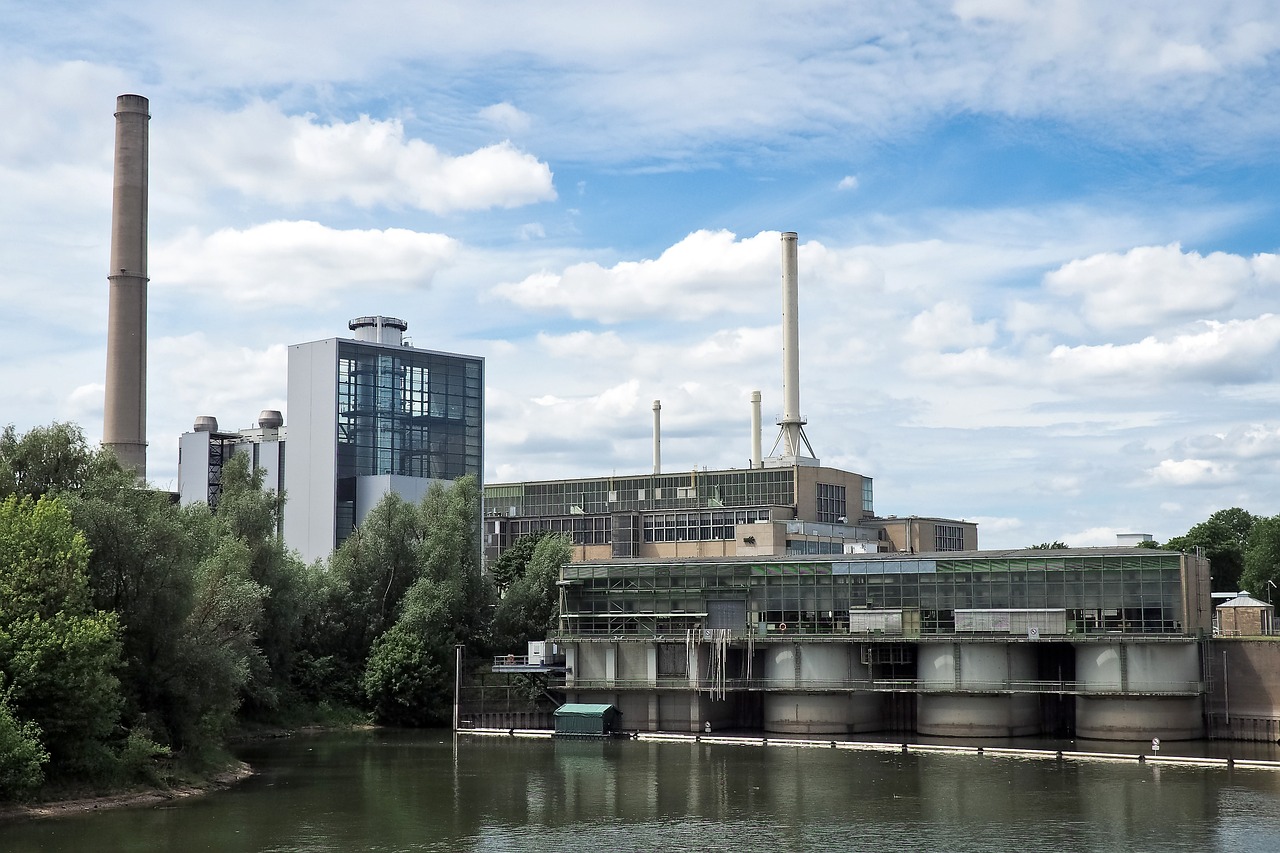
Technological Innovations
In recent years, the field of hydropower has witnessed a surge of that are reshaping how we harness energy from water. These advancements are not only enhancing the efficiency of existing systems but are also paving the way for new projects that can contribute significantly to energy independence. Imagine a world where rivers and streams are not just beautiful natural features but also powerful allies in our quest for sustainable energy. This is becoming a reality, thanks to cutting-edge technologies.
One of the most exciting developments is the introduction of small modular hydropower systems. Unlike traditional large-scale dams, these smaller units can be deployed in a variety of settings, including rural areas and remote communities. They are easier to install, require less capital investment, and can be tailored to fit local energy needs. This flexibility allows for a more decentralized energy production model, which is crucial for energy independence.
Moreover, advancements in turbine technology have led to the creation of more efficient and environmentally friendly options. For instance, fish-friendly turbines are designed to minimize the impact on aquatic life, allowing fish to pass through without harm. This innovation not only addresses environmental concerns but also enhances the overall sustainability of hydropower projects. It's a win-win situation—clean energy production without compromising the health of our ecosystems.
Another area where innovation is making waves is in the realm of energy storage solutions. With the integration of hydropower into the broader energy grid, the ability to store energy generated during peak flow periods for use during lower flow times is crucial. Technologies such as pumped-storage hydroelectricity allow excess energy to be stored in elevated reservoirs, which can then be released to generate electricity when demand is high. This capability not only stabilizes the grid but also enhances the reliability of hydropower as a consistent energy source.
Furthermore, the use of smart grid technology in conjunction with hydropower is revolutionizing how we manage energy distribution. Smart grids use digital technology to monitor and manage the transport of electricity from all generation sources, including hydropower. This means that energy can be allocated more efficiently, ensuring that it reaches consumers when and where it is needed most. The result is a more resilient energy infrastructure that can adapt to changing demands and reduce reliance on fossil fuels.
As we look towards the future, the potential for hydropower to play a key role in achieving energy independence is becoming clearer. With ongoing research and development, the possibilities are virtually endless. From enhancing turbine designs to integrating artificial intelligence for monitoring and maintenance, the innovations in hydropower are not just technical improvements; they represent a shift towards a more sustainable and self-sufficient energy future.
- What are the main benefits of technological innovations in hydropower?
Technological innovations enhance efficiency, reduce environmental impact, and enable decentralized energy production. - How do small modular hydropower systems differ from traditional large-scale dams?
Small modular systems are easier to install, require less investment, and can be customized for local energy needs. - What is pumped-storage hydroelectricity?
Pumped-storage is a method of storing energy by moving water between reservoirs at different elevations to generate electricity when needed. - How does smart grid technology benefit hydropower?
Smart grids improve energy distribution efficiency, ensuring energy reaches consumers when and where it is needed, thus enhancing reliability.
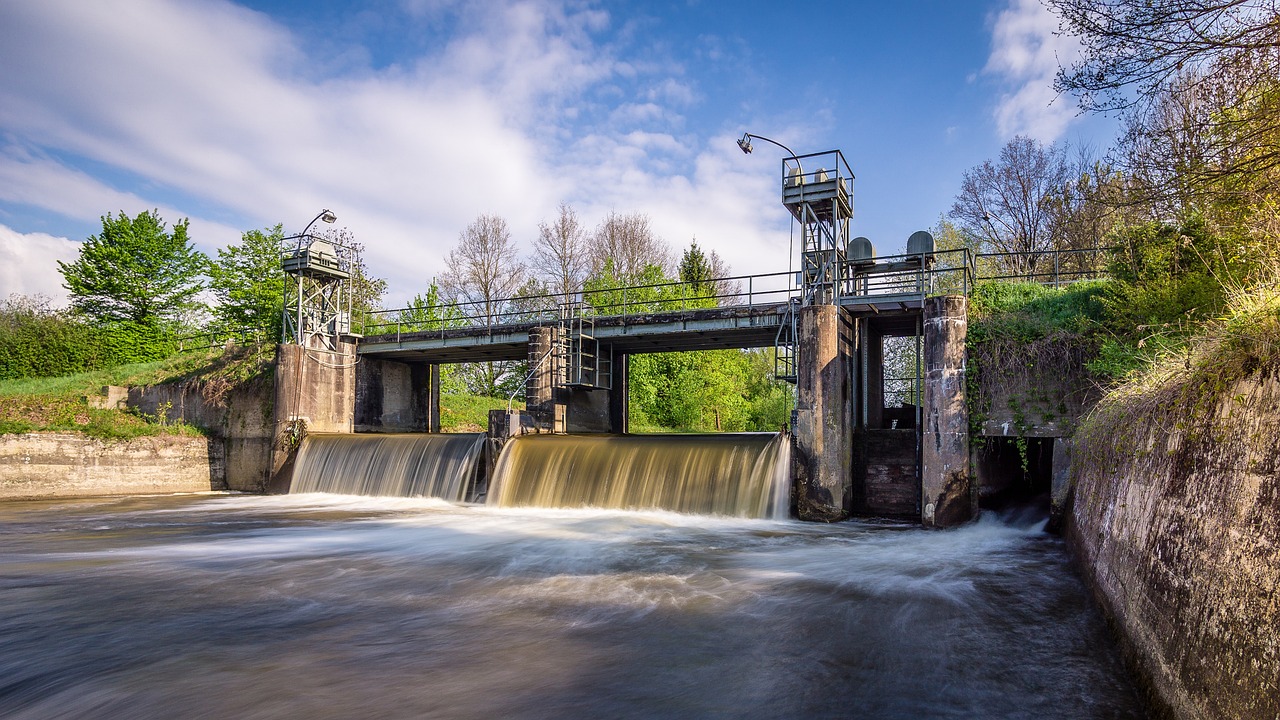
Challenges Facing Hydropower
Despite the clear advantages of hydropower, it is not without its challenges. These hurdles can significantly impact the development and implementation of hydropower projects, ultimately affecting the quest for energy independence. One major issue is the complex regulatory landscape. Each country has its own set of laws and regulations governing water use, environmental protection, and energy production. Navigating this intricate web can be daunting for developers. For instance, securing permits can take years, and the process is often bogged down by bureaucratic red tape. This can delay projects and increase costs, making it less appealing for investors.
Another significant challenge is funding. Building a hydropower facility requires substantial capital investment. Many projects are stalled due to a lack of financial resources. Traditional funding models may not suffice, especially for smaller projects. In many cases, developers need to seek out innovative financing solutions, such as public-private partnerships, to get their projects off the ground.
Public perception also plays a crucial role in the success of hydropower initiatives. While some communities recognize the benefits of renewable energy, others have concerns about the environmental impacts of hydropower projects. This can lead to public opposition, which can be a formidable barrier. For example, when a new dam is proposed, local residents may fear that it will disrupt their way of life, affect property values, or harm the local ecosystem. Addressing these concerns requires effective communication and community engagement strategies.
To illustrate the challenges hydropower faces, consider the following table that summarizes key obstacles:
| Challenge | Description |
|---|---|
| Regulatory Hurdles | Complex laws and lengthy permitting processes can delay projects. |
| Funding Issues | High capital costs and limited financing options can stall development. |
| Public Opposition | Concerns about environmental impact can lead to community pushback. |
In addition to these challenges, hydropower projects must also contend with changing climate conditions. Fluctuations in rainfall and water levels can impact the viability of hydropower as a consistent energy source. This variability can make it difficult for operators to predict energy production and can lead to significant operational challenges.
Ultimately, while hydropower holds great promise for achieving energy independence, it is essential to address these challenges head-on. By fostering collaboration among stakeholders, investing in research and technology, and engaging with local communities, the hydropower sector can work towards overcoming these obstacles and unlocking its full potential.
- What are the primary benefits of hydropower? Hydropower is a renewable energy source that produces low greenhouse gas emissions and provides reliable electricity generation.
- How does hydropower impact the environment? While cleaner than fossil fuels, hydropower can disrupt local ecosystems, affecting fish migration and water quality.
- What are the funding challenges for hydropower projects? High initial capital costs and limited financing options can hinder the development of hydropower facilities.
- How can public opposition be addressed? Effective communication and community engagement are crucial to alleviating concerns and gaining public support.
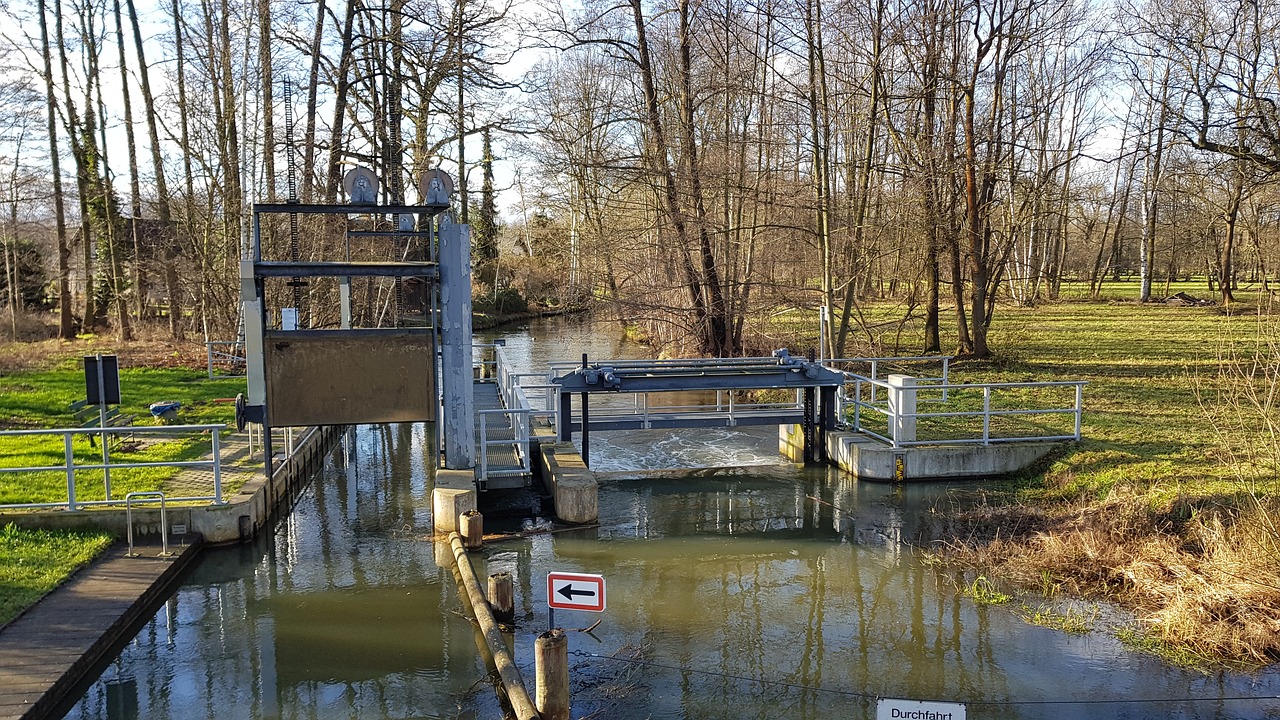
Regulatory and Policy Issues
The journey of hydropower from conception to implementation is often riddled with regulatory and policy challenges. These hurdles can significantly impact the feasibility and timeline of hydropower projects. Governments around the world have established a complex framework of regulations aimed at ensuring that energy projects, including hydropower, are environmentally sustainable, economically viable, and socially acceptable. However, navigating this regulatory maze can be daunting for developers.
One of the primary regulatory concerns involves permitting processes. Developers must often secure a multitude of permits from various governmental agencies, which can vary greatly depending on the location and scale of the project. This includes environmental assessments, water rights, and construction permits. The lengthy and sometimes convoluted permitting process can delay projects for years, which in turn affects the overall energy supply and the goal of achieving energy independence.
Moreover, policies related to renewable energy incentives play a critical role in the development of hydropower projects. In many countries, governments offer financial incentives to promote renewable energy sources. However, these incentives can be inconsistent or subject to change, creating uncertainty for investors and developers. A lack of stable policy frameworks can deter potential investment in hydropower, which is essential for expanding its capacity and contribution to energy independence.
To illustrate the complexity of these regulatory issues, consider the following table that outlines some of the key regulatory challenges faced by hydropower projects:
| Regulatory Challenge | Description |
|---|---|
| Permitting Delays | Lengthy approval processes for necessary permits can stall projects. |
| Environmental Regulations | Strict compliance with environmental laws can increase project costs. |
| Water Rights Issues | Securing rights to use water resources can be contentious and complex. |
| Changing Incentives | Inconsistent government incentives can create investment uncertainty. |
In addition to regulatory frameworks, public perception plays a significant role in the approval process for hydropower projects. Local communities often express concerns about the potential environmental impacts, leading to public opposition. This social dynamic can result in added scrutiny during the regulatory review process, further complicating the path to project approval. Engaging with local communities and addressing their concerns is crucial for developers to gain public support and ensure smoother regulatory navigation.
Ultimately, overcoming these regulatory and policy issues is essential for the growth of hydropower as a viable energy source. By advocating for clearer regulations, stable incentives, and enhanced community engagement, stakeholders can help pave the way for a more sustainable and independent energy future. The road may be challenging, but the potential rewards—both for energy independence and environmental sustainability—are well worth the effort.
- What are the main regulatory challenges facing hydropower projects? The main challenges include permitting delays, environmental regulations, water rights issues, and changing incentives.
- How do public perceptions affect hydropower development? Public concerns can lead to opposition, making it crucial for developers to engage with local communities to address their worries.
- Why is stable policy important for hydropower? Stable policies ensure consistent investment and encourage the development of hydropower projects, contributing to energy independence.

Public Perception and Opposition
When it comes to hydropower, public perception plays a crucial role in determining the success or failure of projects. Many people often have a love-hate relationship with this renewable energy source. On one hand, hydropower is heralded as a clean and efficient way to produce energy, reducing our reliance on fossil fuels. On the other hand, the construction of dams and reservoirs can lead to significant environmental and social concerns, sparking opposition from local communities and environmental activists.
One of the primary reasons for public skepticism is the fear of environmental degradation. Many individuals are concerned that hydropower projects can disrupt local ecosystems, leading to the displacement of wildlife and alteration of natural habitats. For instance, the construction of a dam can flood vast areas of land, which not only affects flora and fauna but also impacts human communities that rely on those ecosystems for their livelihoods. This is particularly true for indigenous populations who have lived in harmony with their surroundings for generations.
Moreover, the potential for water quality issues raises alarms among residents. Changes in water flow and temperature can lead to adverse effects on aquatic life, which in turn affects fishing and recreational activities that local communities depend upon. As people become more aware of these issues, their opposition to hydropower projects can intensify, leading to protests and legal challenges that delay or even halt development.
Additionally, misinformation can exacerbate public opposition. In the age of social media, rumors and exaggerated claims can spread like wildfire, influencing public opinion before accurate information has a chance to take hold. This is where effective communication and community engagement become vital. Hydropower companies must proactively address concerns by providing transparent information about the environmental assessments conducted, the measures taken to mitigate impacts, and the long-term benefits of the projects.
To illustrate how public perception can vary, consider the following table that summarizes key factors influencing support or opposition to hydropower projects:
| Factor | Support | Opposition |
|---|---|---|
| Environmental Impact | Low greenhouse gas emissions | Disruption of local ecosystems |
| Economic Benefits | Job creation and energy independence | Potential loss of land and livelihoods |
| Community Engagement | Involvement in decision-making | Lack of transparency and consultation |
Ultimately, fostering a positive public perception of hydropower requires a delicate balance. It demands not only addressing environmental concerns but also showcasing the potential benefits that come with these projects. By engaging communities early in the planning process and providing clear, factual information about the advantages of hydropower, developers can help shift public opinion in favor of sustainable energy solutions. After all, when communities feel heard and valued, they are more likely to embrace hydropower as part of a cleaner, greener future.
- What are the main environmental concerns associated with hydropower? Hydropower can disrupt ecosystems, affect aquatic life, and alter water quality.
- How can public opposition impact hydropower projects? Public opposition can lead to delays, increased costs, and even cancellation of projects.
- What steps can developers take to address public concerns? Developers should engage with local communities, provide transparent information, and address environmental impacts proactively.
- Is hydropower considered a renewable energy source? Yes, hydropower is classified as a renewable energy source because it harnesses the energy of flowing water.
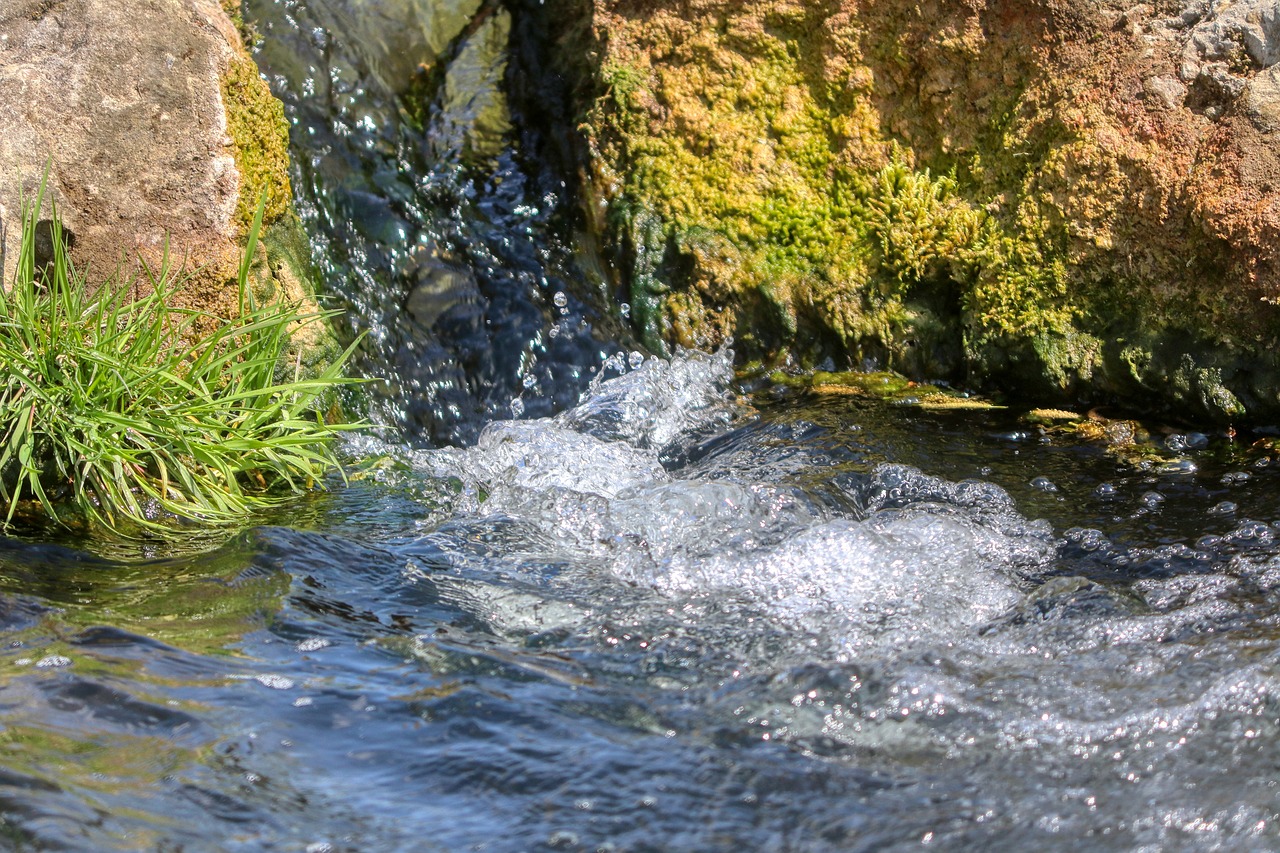
The Future of Hydropower
As we look toward the horizon of energy production, hydropower stands poised to play a crucial role in the quest for energy independence. With the world increasingly focused on sustainable practices and reducing carbon footprints, hydropower offers a reliable and renewable source of energy that can significantly contribute to these goals. But what does the future hold for this age-old technology?
The potential for hydropower is immense, especially as technological advancements continue to evolve. New innovations are making it possible to harness energy from smaller water sources, thus expanding the scope of hydropower beyond the traditional large dam projects. For instance, micro-hydropower systems are gaining traction, allowing communities to generate their own electricity without the need for extensive infrastructure. This localized energy production not only promotes self-sufficiency but also reduces transmission losses associated with long-distance electricity transport.
Furthermore, the integration of hydropower with other renewable energy sources, such as solar and wind, is becoming increasingly feasible. By combining these technologies, we can create a more resilient and flexible energy grid. Hydropower can act as a balancing force, providing backup power when solar or wind generation is low, thus ensuring a consistent energy supply. This synergy between different energy sources is essential for achieving a stable and sustainable energy future.
Another exciting aspect of the future of hydropower is its potential to contribute to energy storage solutions. With the rise of electric vehicles and the increasing demand for batteries, hydropower can play a pivotal role in energy storage through pumped storage systems. These systems allow excess energy generated during low-demand periods to be stored and then released during peak demand times, effectively acting as a giant battery. This capability not only enhances grid stability but also maximizes the use of renewable energy.
However, the future of hydropower is not without its challenges. Issues such as regulatory hurdles, environmental concerns, and public perception must be addressed to unlock its full potential. Governments and stakeholders must work together to create favorable policies that promote hydropower development while ensuring environmental protection. Educating the public about the benefits of hydropower and involving local communities in decision-making processes can also help mitigate opposition and foster greater acceptance.
In conclusion, hydropower holds a promising future as a cornerstone of energy independence. With continued innovation, collaboration, and a commitment to sustainability, we can harness the power of flowing water to create a cleaner, more resilient energy landscape. As we navigate the complexities of energy production and consumption, hydropower remains a vital player in the transition towards a more sustainable future.
- What is hydropower? Hydropower is a renewable energy source that generates electricity by harnessing the energy of flowing water.
- How does hydropower contribute to energy independence? By providing a reliable and local source of energy, hydropower reduces reliance on imported fossil fuels and enhances energy security.
- What are the environmental impacts of hydropower? While hydropower is cleaner than fossil fuels, it can affect local ecosystems, particularly aquatic life and water quality.
- What innovations are shaping the future of hydropower? Technological advancements, such as micro-hydropower systems and pumped storage solutions, are enhancing the efficiency and sustainability of hydropower.
Frequently Asked Questions
- What is hydropower and how does it work?
Hydropower is a renewable energy source that generates electricity by harnessing the energy of flowing water. Essentially, when water flows through a dam or a turbine, it spins the turbine blades, which then convert this kinetic energy into electrical energy. It’s like using a river as a giant battery that powers our homes!
- What are the main benefits of hydropower?
Hydropower offers a range of benefits, including being a renewable source of energy, producing low greenhouse gas emissions, and providing a reliable power supply. It can help reduce our dependence on fossil fuels and contribute to energy independence, making it a crucial player in the quest for a sustainable energy future.
- How does hydropower impact the environment?
While hydropower is cleaner than fossil fuels, it can still have environmental impacts. For instance, the construction of dams can disrupt local ecosystems, affecting fish migration and altering water quality. However, with careful planning and innovative technologies, many of these issues can be mitigated.
- What challenges does hydropower face?
Hydropower faces several challenges, including regulatory hurdles, funding issues, and public opposition. Navigating the complex regulatory landscape can be difficult, and public concerns about environmental impacts can lead to opposition against new projects. It’s essential for developers to engage with communities and address these concerns effectively.
- What innovations are being developed in hydropower?
Recent technological advancements are making hydropower more efficient and sustainable. Innovations such as improved turbine designs, fish-friendly technologies, and smart grid integration are helping to enhance the viability of hydropower as a key energy source for the future.
- What is the future of hydropower?
The future of hydropower looks promising, with potential growth in both large-scale and small-scale projects. As the world shifts towards cleaner energy sources, hydropower could play a pivotal role in achieving energy independence and supporting a sustainable energy landscape.



















